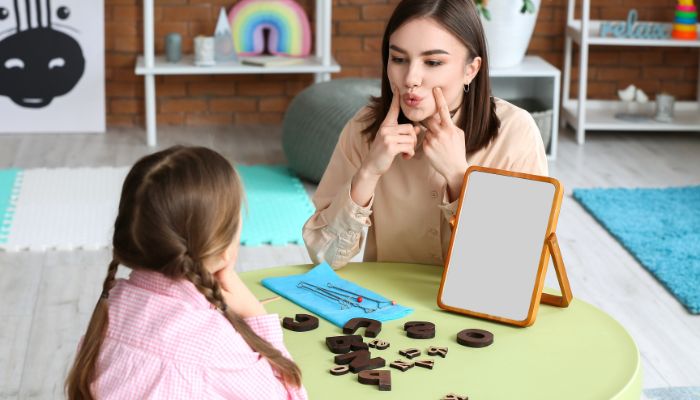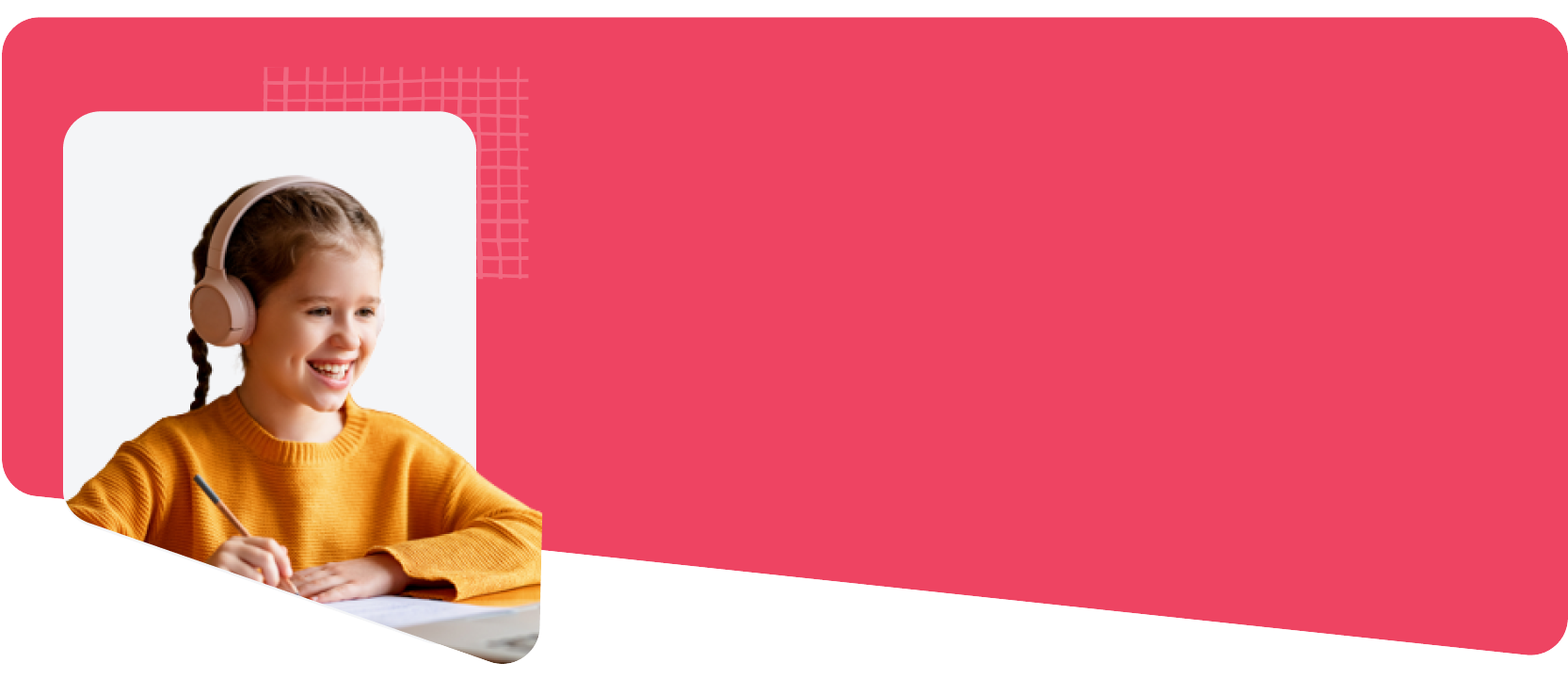Spelling can be a significant challenge for children with dyslexia, often leading to frustration and a lack of confidence. This difficulty arises from challenges in phonological processing and memory, making it hard to recall and apply spelling rules.
As a parent, it's essential to understand that these struggles are not a reflection of your child's intelligence or effort. With the right strategies and support, children with dyslexia can improve their spelling skills and gain confidence in their abilities.
In this guide, we'll explore strategies to help your child improve their spelling. These methods are designed to be practical, engaging, and supportive, ensuring that learning becomes a positive experience.
TLDR
-
Dyslexia makes spelling difficult due to challenges in phonological processing and memory.
-
Children with dyslexia may have inconsistent spelling, phonetic errors, and difficulty with sight words.
-
Practical strategies include multisensory techniques, breaking words into syllables, word mapping, flashcard practice, and using assistive technology.
-
These methods are designed to support children’s unique learning needs, helping them improve their spelling and build confidence.
-
With consistent practice and support, children with dyslexia can master spelling and overcome challenges.
What Is Dyslexia?
Dyslexia is a learning difference that affects how children process written and spoken language. It's not related to intelligence; many children with dyslexia are highly creative and excel in areas like problem-solving and art. Instead, dyslexia involves challenges with recognizing and decoding words, making reading and spelling more difficult.
Children with dyslexia often struggle with tasks like sounding out words, spelling them correctly, and reading fluently. These difficulties arise from differences in how their brains process language. It's important to note that dyslexia is not a sign of laziness or lack of effort.
With the right support and strategies, children with dyslexia can thrive academically and develop a love for reading. Understanding dyslexia is the first step in helping your child navigate their learning journey with confidence.
Now that you understand what dyslexia is, it's important to explore how it specifically impacts a child's ability to spell.
Correlation Between Dyslexia and Spelling

Children with dyslexia often face significant challenges with spelling, a difficulty that stems from how their brains process language. Unlike their peers, they may struggle to connect sounds with letters, leading to errors in spelling words correctly.
One of the primary reasons for these spelling difficulties is a deficit in phonological awareness, the ability to recognize and manipulate sounds in spoken words. This means your child might struggle to break down words into individual sounds or blend those sounds together to form words.
For instance, they might spell "cat" as "kat" or "night" as "nite," reflecting how the word sounds rather than its correct spelling.
Additionally, dyslexia can affect memory and the ability to recall the correct sequence of letters in words. This can lead to inconsistent spelling, where the same word might be spelled differently in the same piece of writing.
Now that you have explored the connection between dyslexia and spelling, it's important to recognize the signs that can indicate your child is struggling with this challenge.
Also Read: Dyslexia Tutoring in Australia: Special Needs and Strengths
Signs of Dyslexia in Spelling
Recognizing the signs of dyslexia in your child's spelling can be the first step toward providing the support they need. Children with dyslexia often face unique challenges that affect their ability to spell words correctly.
Here are some common signs to look out for:
1. Inconsistent Spelling Patterns
One of the most noticeable signs is inconsistent spelling. Your child might spell the same word correctly one day and incorrectly the next. For instance, "friend" might be written as "frend" or "frind" on different occasions. This inconsistency is a hallmark of dyslexia and reflects the difficulty in retaining the correct spelling of words.
2. Phonetic Spelling Errors
Children with dyslexia often spell words as they sound, leading to phonetic errors. For example, "school" might be written as "skool" or "because" as "becos." These errors occur because your child struggles to connect sounds with their corresponding letters.
3. Reversals and Transpositions
Another common sign is the reversal or transposition of letters within words. Your child might write "was" as "saw" or "b" as "d." While some letter reversals are typical in early writing development, persistent and frequent occurrences beyond the early years can indicate dyslexia.
4. Difficulty with Sight Words
Sight words, or high-frequency words, don't always follow standard phonetic rules and often need to be memorized. Children with dyslexia may have trouble learning and recalling these words. Words like "the," "said," and "where" might be misspelled consistently, even after repeated exposure.
5. Slow and Laborious Writing
Writing can be a slow and effortful process for children with dyslexia. They may take longer than their peers to complete writing tasks, and their handwriting might be inconsistent or difficult to read. This can be due to challenges in organizing thoughts and translating them into written form.
If you notice these signs in your child's spelling, it's essential to seek support early. Understanding these challenges can help you advocate for your child's needs and explore practical strategies to support their learning.
Now that you have identified the signs of dyslexia in spelling, let's explore strategies that can help enhance your child's spelling skills.
Also Read: Engaging Activities for Autistic Kids: Boosting Sensory and Fine Motor Skills
Strategies to Enhance Spelling Skills in Children with Dyslexia

Helping your child improve their spelling skills involves implementing strategies designed to their unique needs. These strategies focus on building phonological awareness, memory, and confidence while making learning engaging and practical.
Here are some proven techniques to support your child’s journey towards mastering spelling.
1. Use Multisensory Techniques
Engaging multiple senses, such as sight, sound, and touch, can significantly enhance your child's ability to learn and remember spelling patterns. This approach strengthens neural connections, making it easier for your child to recall and apply spelling rules.
How It Helps
Multisensory learning strengthens memory and understanding by creating multiple pathways for information processing. This approach is particularly beneficial for children with dyslexia, as it caters to their unique learning needs and helps them retain spelling patterns more accurately.
Activities You Should Try
-
Shaving Cream Writing: Spread a thin layer of shaving cream on a tray. Have your child use their finger to write words, saying each letter aloud as they trace. This tactile experience reinforces letter shapes and sounds.
-
Sandpaper Letters: Create or purchase sandpaper letters. Let your child trace these letters with their fingers, feeling the texture while saying the corresponding sound. This combines touch with auditory learning.
-
Magnetic Letter Play: Use magnetic letters on a board or refrigerator. Ask your child to form words, saying each letter's sound as they place it. This visual and tactile activity aids in letter recognition and spelling.
2. Break Words into Syllables
Teaching your child to divide words into syllables can simplify the spelling process. Start with simple words and gradually move to more complex ones. For example, break "elephant" into "el-e-phant" and "banana" into "ba-na-na."
How It Helps
Syllable division aids in decoding multisyllabic words, making them more manageable. This strategy helps children with dyslexia recognize patterns in words, improving both reading and spelling skills.
Activities You Should Try
-
Clapping Syllables: Say a word aloud and have your child clap their hands for each syllable. For instance, "banana" would be three claps. This auditory activity helps in identifying syllable breaks.
-
Syllable Sorting: Write a list of words on cards. Ask your child to sort them into piles based on the number of syllables. For example, "cat" (1 syllable), "elephant" (3 syllables).
-
Syllable Puzzles: Cut words into syllable parts and have your child match them to form the complete word. This visual and hands-on activity reinforces syllable recognition.
3. Implement Word Mapping
Word mapping involves focusing on the pronunciation of a word before seeing its spelling. For instance, say the word "night," stretch it out to /n/ /i/ /t/, and then write it.
How It Helps
This technique helps children with dyslexia connect sounds to their corresponding letters, reinforcing the relationship between phonology and orthography. It supports the development of orthographic memory, enabling children to recall and spell words more accurately.
Activities You Should Try:
-
Elkonin Boxes: Use elkonin boxes to represent each sound in a word. For "cat," draw three boxes and have your child place a token in each box as they say each sound. Then, write the letters that correspond to those sounds.
-
Rainbow Writing: Write a word multiple times using different colored pens or markers. As your child writes, have them say each sound aloud. This visual reinforcement aids in memory.
-
Sound Boxes: Draw boxes on a paper and say a word aloud. Have your child write a letter in each box corresponding to the sounds they hear. This activity helps in segmenting and blending sounds.
4. Practice with Flashcards
Create flashcards with common sight words and review them regularly. Include images or use colored fonts to make the cards more visually appealing and engaging.
How It Helps: Flashcards promote repetition and active recall, essential for reinforcing spelling patterns. They also help in building sight word recognition, which is crucial for fluent reading and writing.
Activities You Should Try
-
Flashcard Games: Turn flashcard practice into a game by timing how quickly your child can correctly identify and spell words. Offer small rewards for improvement.
-
Memory Match: Create two sets of flashcards with matching words and pictures. Lay them face down and have your child turn over two cards at a time to find matching pairs.
-
Flashcard Sorting: Sort flashcards into categories such as "easy," "medium," and "challenging." Focus on practicing the "challenging" category to improve those words.
5. Utilize Assistive Technology
Incorporate tools like spell checkers or speech-to-text software to assist your child. These technologies can provide immediate feedback and support, making writing tasks less daunting.
How It Helps
Assistive technology tools help children with dyslexia by providing support in areas where they face challenges, such as spelling and writing. These tools can boost confidence and independence, allowing children to focus on content rather than being hindered by spelling difficulties.
Activities You Should Try
-
Speech-to-Text Practice: Use speech-to-text software to allow your child to dictate their thoughts. This practice helps in organizing ideas without the pressure of spelling.
-
Digital Reading Tools: Utilize text-to-speech applications to have books or assignments read aloud to your child. This can aid in comprehension and reduce reading fatigue.
-
Interactive Spelling Apps: Explore educational apps designed for spelling practice. Many apps offer interactive games and activities that make learning fun and engaging.
Implementing these strategies consistently can make a significant difference in your child's spelling abilities. Remember, every child progresses at their own pace, and with your support, they can overcome the challenges posed by dyslexia.
Also Read: The Comprehensive Guide To Sand Play: Observing And Enhancing Child Development
Conclusion
Supporting your child's spelling development, especially when they have dyslexia, requires understanding, patience, and the right strategies. By incorporating multisensory techniques, breaking words into syllables, implementing word mapping, practicing with flashcards, and utilizing assistive technology, you can create a supportive learning environment that caters to your child's unique needs.
Remember, progress may be gradual, but with consistent effort and encouragement, your child can overcome spelling challenges and build confidence in their abilities. Celebrate each milestone, no matter how small, and continue to provide the support and resources they need to succeed. If you're looking for more ways to encourage your child's reading and writing, Funfox offers helpful resources that can make learning enjoyable and engaging.
FAQs
1. What role does repetition play in learning to spell?
Repetition helps build memory. Spelling practice should be short, frequent, and interactive to help children retain what they’ve learned.
2. How should progress be assessed?
Rather than grading harshly on every spelling error, feedback should focus on whether the student applied learned rules correctly. If a phonetic attempt is close, show the correct spelling next to it and discuss the difference. That encourages learning without discouragement
3. What is dysorthography and how is it related to dyslexia?
Dysorthography is a specific spelling disorder that often co-occurs with dyslexia. It involves persistent spelling mistakes omitting letters, confusing word parts, misplacing apostrophes, or misusing articles and arises from phonological processing deficits.
4. How does spelling progress compare with reading for learners with dyslexia?
Spelling often develops more slowly than reading because spelling requires mapping sounds to letters in many possible ways. Continued practice using structured programs and patience are essential for visible gains over time.
5. How can students benefit from pattern-based spelling instruction?
Grouping words by patterns (e.g. words ending in -tion, -sion) allows learners to identify consistent spelling units. This accelerates learning by revealing predictable structures in the writing system.










